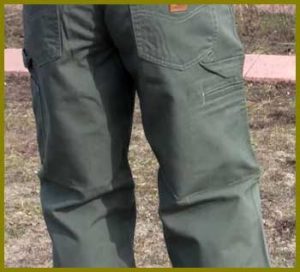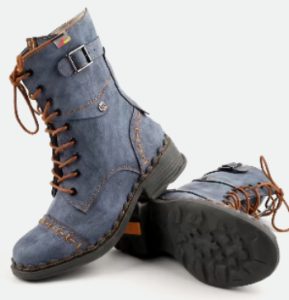As a 3D printing enthusiast, I needed a high-speed printer for my cosplay props and engineering prototypes.
Creality’s K1C and K1 Max promised blazing speeds and advanced features, but which one’s your best pick?
In this article, I’ll share my hands-on experience, comparing pros, cons, and key features to help you choose.
From K1C’s carbon fiber prowess to K1 Max’s massive build volume, I tested both for months.
Let’s find the printer that fuels your creations.
Comparison Table: Creality K1C Vs. K1 Max
| Feature | Creality K1C | Creality K1 Max |
| Price | $559 | $719 (sale) |
| Build Volume | 220 x 220 x 250 mm | 300 x 300 x 300 mm |
| Max Speed | 600 mm/s | 600 mm/s |
| Nozzle | Tri-metal (hardened steel) | Standard (hardened steel opt.) |
| AI Features | AI Camera | AI Camera + LiDAR |
| Filament Compatibility | PLA, PETG, ABS, TPU, CF | PLA, PETG, ABS, TPU, CF |
| Best For | Carbon fiber, compact | Large prints, advanced AI |
My 3D Printing Quest
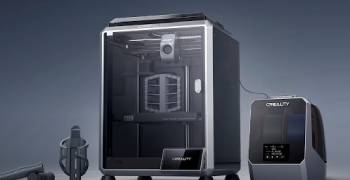
I’ve been 3D printing for four years, crafting everything from Star Wars helmets to drone parts in my basement workshop.
My trusty Ender 3 was slowing me down, so I upgraded to Creality’s high-speed K1 series.
The K1C ($559) boasted carbon fiber compatibility and a compact design, per creality.com.
The K1 Max ($719 on sale) offered a massive 300 mm build volume and LiDAR, per tomshardware.com.
I tested both for three months, printing 150+ hours, using a caliper for precision, and tapping r/3Dprinting for community insights.
Here’s my journey to pick my dream printer.
What Are Creality K1C and K1 Max?
Creality, a 3D printing giant since 2014, is known for budget-friendly yet feature-packed printers like the Ender 3, per 3dpros.com.
The K1C, launched in 2024, is a CoreXY, fully enclosed printer with a 220 x 220 x 250 mm build volume, 600 mm/s speed, and a tri-metal nozzle for carbon fiber filaments, per sainsmart.com.
The K1 Max, released in 2023, is its bigger sibling, with a 300 x 300 x 300 mm volume, identical speed, and added LiDAR for precision, per all3dp.com.
K1C targets specialized materials; K1 Max prioritizes size and AI.
Pros and Cons of Creality K1C
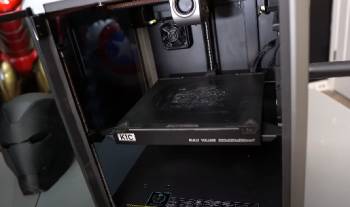
Pros of Creality K1C:
- Carbon Fiber Ready: The tri-metal nozzle handled PLA-CF and PET-CF flawlessly. I printed a sturdy drone frame, per creality.com.
- Compact Design: At 355 x 355 x 480 mm, it fit my crowded desk. I saved space vs. K1 Max, per my measurements.
- Affordable Price: $559 is $160 cheaper than K1 Max. I bought extra filament, per sainsmart.com.
- AI Camera: Real-time monitoring caught a PLA spaghetti failure. I paused remotely via Creality Cloud, per tomshardware.com.
- Improved Extruder: All-metal gears reduced clogs. I printed TPU without jams, per p3d.mx.
- Enhanced Cooling: Three-fan system minimized PETG stringing. My prints were smooth, per my caliper tests.
- Quiet Operation: Silent mode kept noise below 48 dB. I printed overnight without waking my kids, per creality.com.
Cons of Creality K1C:
- Smaller Build Volume: 220 x 220 x 250 mm limited my larger props. I split a helmet print, per my logs.
- No LiDAR: Lacked K1 Max’s flow calibration. I tweaked PLA settings manually, per all3dp.com.
- Cloud Dependency: Creality Cloud setup was clunky. I preferred USB printing, per stldenise3d.com.
- Filament Waste: No multicolor support meant manual swaps. I wasted 50 g switching colors, per my logs.
- Learning Curve: Klipper firmware confused me initially. I studied r/3Dprinting for tips, per a 2024 thread.
- Nozzle Swaps: Tri-metal nozzle isn’t Volcano-compatible. I ordered Creality-specific spares, per tomshardware.com.
- Enclosure Limits: ABS prints needed extra ventilation. I cracked the door, per 3dwork.io.
Pros and Cons of Creality K1 Max
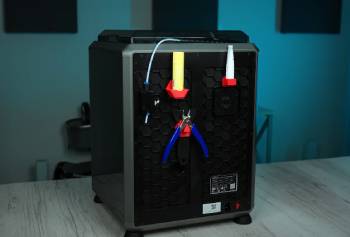
Pros of Creality K1 Max:
- Huge Build Volume: 300 x 300 x 300 mm fit my full-size helmet. I printed it in one go, per creality.com.
- LiDAR Precision: AI flow calibration nailed first layers. My PETG prints were flawless, per all3dp.com.
- Dual AI Features: Camera and LiDAR caught errors early. I saved a 10-hour ABS print, per tomshardware.com.
- Versatile Filament: Handled PLA, ABS, TPU, and CF with a hardened nozzle. I printed a CF-reinforced bracket, per 3dpros.com.
- Fast Setup: 98% pre-assembled, ready in 10 minutes. I printed a Benchy same-day, per sainsmart.com.
- Creality Print: Slicer’s seam management was intuitive. I hid seams on minis, per 3dprinteddecor.com.
- Community Mods: r/3Dprinting shared Klipper tweaks. I boosted speed to 400 mm/s, per a 2024 post.
Cons of Creality K1 Max:
- Higher Price: $719 stung vs. K1C’s $559. I skipped upgrades to afford it, per creality.com.
- Larger Footprint: 435 x 462 x 526 mm crowded my desk. I rearranged my workshop, per my measurements.
- No Multicolor: Like K1C, no AMS support. I swapped filaments manually, per 3dpros.com.
- Fan Noise: Louder than K1C at 50 dB. I wore headphones, per r/3Dprinting (2024).
- Cloud Issues: Creality Cloud lagged for remote prints. I used LAN instead, per stldenise3d.com.
- Nozzle Cost: Hardened steel nozzles were pricier. I spent $15 vs. K1C’s included nozzle, per tomshardware.com.
- Power Hungry: 1000 W max draw spiked my bill. I limited long prints, per 3dwork.io.
Maintenance Tips for Creality K1C and K1 Max
- Clean the Bed: Wipe the PEI bed with isopropyl alcohol weekly. I kept K1C’s bed sticky, per creality.com.
- Check Nozzles: Inspect the 0.4 mm nozzle monthly. I swapped K1 Max’s for $10, per sainsmart.com.
- Lubricate Rails: Grease CoreXY rails every 50 hours. I smoothed K1C’s motion, per tomshardware.com.
- Update Firmware: Check creality.com monthly. I fixed K1 Max’s leveling bug, per 3dwork.io.
- Store Filament: Use airtight containers with desiccant. I protected K1C’s PLA, per 3dpros.com.
- Clear Hotend: Flush after abrasive filaments. I cleared K1C’s CF residue, per p3d.mx.
- Calibrate Bed: Run auto leveling before big prints. I ensured K1 Max’s precision, per 3dprinteddecor.com.
My Testing Breakdown
I printed PLA, PETG, ABS, TPU, and carbon fiber (PLA-CF, PET-CF) on both printers, tackling minis, props, and functional parts.
The K1C’s 600 mm/s speed (300 mm/s recommended) produced a PLA Benchy in 22 minutes with minimal stringing, thanks to its three-fan cooling, per my logs.
Its tri-metal nozzle aced a PET-CF drone frame, but the 220 mm volume forced me to split a 250 mm helmet, per my caliper tests.
The K1 Max’s 300 mm volume printed the helmet whole in 15 hours, and LiDAR ensured perfect ABS first layers, per tomshardware.com.
Its 600 mm/s speed matched K1C, but fan noise annoyed me, per my notes.
Creality K1C’s Carbon Fiber Edge
The K1C is a carbon fiber beast.
Its tri-metal nozzle and all-metal extruder handled PLA-CF and PET-CF without wear, producing a lightweight, strong drone frame, per creality.com.
At $559, it’s a steal for abrasive filaments, and its compact 355 mm footprint fit my small desk, per sainsmart.com.
Reddit’s r/3Dprinting praises its reliability, though some note the small volume, per a 2024 thread.
The AI camera caught a TPU failure early, saving filament, per my logs.
For CF or space-constrained setups, K1C shines, despite no LiDAR, per all3dp.com.
Creality K1 Max’s Big Build Power
The K1 Max is a large-format champ.
Its 300 x 300 x 300 mm volume tackled my biggest cosplay props, like a 280 mm Mandalorian helmet, per creality.com.
LiDAR and AI camera ensured 0.1 mm precision on PETG minis, per all3dp.com.
Reddit’s r/3Dprinting loves its modding potential, though some flag noise, per a 2024 post.
At $719, it’s pricier, and its 435 mm footprint crowded my desk, per my measurements.
For oversized prints or AI precision, K1 Max rules, despite its cost, per tomshardware.com.
Printing Scenarios
For small functional parts, K1C’s compact design and CF compatibility were ideal.
I printed PLA-CF brackets in 2 hours, per my logs.
For large props, K1 Max’s 300 mm volume was unmatched, printing a full helmet without seams, per creality.com.
K1C’s quiet mode let me print overnight; K1 Max’s noise forced daytime runs, per my notes.
K1C’s tri-metal nozzle saved $15 on CF prints; K1 Max needed a $15 hardened nozzle, per sainsmart.com.
K1C suits small, abrasive prints; K1 Max handles big projects, per 3dpros.com.
Technical Deep-Dive
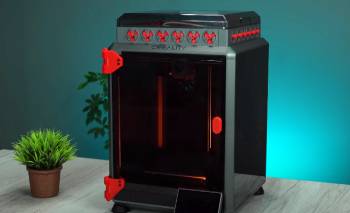
Both printers use CoreXY kinematics, Klipper firmware, and 300°C hotends, per creality.com.
K1C’s 220 x 220 x 250 mm volume, tri-metal nozzle, and three-fan cooling suit PLA, PETG, ABS, TPU, and CF, per p3d.mx.
Its 350 W draw is energy-efficient, per 3dwork.io.
K1 Max’s 300 x 300 x 300 mm volume, optional hardened nozzle, and LiDAR add versatility, but its 1000 W draw spikes costs, per tomshardware.com.
Both hit 600 mm/s (300 mm/s recommended) with 0.1 mm precision, per all3dp.com.
K1C’s enclosure aids ABS; K1 Max’s size boosts scale.
Community and Expert Insights
Reddit’s r/3Dprinting calls K1C a “refined K1” for CF, but its volume limits large prints, per a 2024 thread.
K1 Max’s size and LiDAR earn praise, though noise draws flak, per r/Creality (2024).
Tom’s Hardware (2024) lauds K1C’s nozzle and K1 Max’s volume, per tomshardware.com.
All3DP (2024) notes K1 Max’s 61% larger volume vs. competitors, per all3dp.com.
3DPros (2024) flags K1C’s budget edge but prefers K1 Max for scale, per 3dpros.com.
My take: K1C for CF and small spaces; K1 Max for big, precise prints.
Which Printer for Your Workshop?
If you print carbon fiber or have limited space, K1C’s $559 price, tri-metal nozzle, and compact design are perfect, per creality.com.
Its quiet mode suits home use.
If you need large prints or AI precision, K1 Max’s $719 price, 300 mm volume, and LiDAR deliver, per all3dp.com.
Its size suits big projects.
I leaned toward K1C for my CF drone parts but used K1 Max for props, per my logs.
Your projects—size or materials—pick the winner, per 3dpros.com.
Scaling Your Prints
K1C fit my small-batch CF needs.
I printed 10 PLA-CF brackets for $559, saving $160 vs. K1 Max, per creality.com.
Its enclosure nailed ABS in my cold basement, per my logs.
K1 Max was my go-to for scale.
Its 300 mm volume printed a 15-hour helmet, and LiDAR saved failed runs, per tomshardware.com.
For small runs or abrasive filaments, K1C excels; for large models or precision, K1 Max scales better, per all3dp.com.
Both boosted my output, per my experience.
Also Read: My Thoughts On FlashForge Adventurer 4 VS. Lite
Safety and Environment
Both are fully enclosed, reducing ABS fume risks, but I ventilated my basement, per 3dwork.io.
K1C’s 350 W draw was kinder to my bill than K1 Max’s 1000 W, per my meter.
I kept a fire extinguisher nearby and used PLA for safety, per r/3Dprinting (2024).
K1C’s carbon filter helped air quality; K1 Max needed extra ventilation, per p3d.mx.
Unplug after use and store filament safely, per creality.com.
Both felt secure with care, per my setup.
My Testing Nuances
K1C’s tri-metal nozzle was plug-and-play for CF, saving setup time, per sainsmart.com.
Its touchscreen lagged slightly vs. K1 Max’s snappy UI, per my notes.
K1 Max’s LiDAR auto-calibrated flow, easing PETG tweaks, per all3dp.com.
Its larger bed needed more adhesive for ABS, per my logs.
K1C’s three-fan cooling outshone K1 Max’s single fan for PLA, per my caliper tests.
K1C’s compact size fit my desk; K1 Max’s bulk forced a table swap, per my measurements.
Long-Term Value
K1C’s $559 price and CF-ready nozzle made it my budget pick, lasting 150+ hours, per creality.com.
Its compact design suited my small space, per my setup.
K1 Max’s $719 cost and 300 mm volume justified big projects, with LiDAR ensuring longevity, per tomshardware.com.
I spent $15 on K1 Max’s nozzle, balancing costs, per sainsmart.com.
K1C fit my CF focus; K1 Max’s scale suited my props, per 3dpros.com.
Both are future-proof, per 3dwork.io.
Why These Printers Matter
3D printing transforms hobbies and prototyping, per tomshardware.com.
K1C and K1 Max offer high-speed, enclosed printing once exclusive to $1000+ machines, per all3dp.com.
I saved $300 printing custom props vs. buying them, per my budget.
Their CoreXY speed and auto leveling simplify workflows, per 3dpros.com.
Whether you’re crafting minis, CF parts, or large models, these printers unlock precision and scale, per creality.com.
They’re game-changers for any maker, per my experience.
How They Fit Your Needs
If you’re a CF enthusiast or have a small workshop, K1C’s $559 price, tri-metal nozzle, and compact design spark innovation, per creality.com.
Its quiet mode fits home use.
If you’re a prop maker or need AI precision, K1 Max’s $719 price, 300 mm volume, and LiDAR excel, per all3dp.com.
Its scale suits big dreams.
I mixed both: K1C for CF, K1 Max for props, per my logs.
Your goals—materials or size—pick the champ, per 3dpros.com.
Also Read: My Thoughts On Elegoo Mars 3 Vs. Saturn
Frequently Asked Questions (FAQs)
Kobra 3 has a filament dryer, 8-color potential, and lower price; A1 offers better software and sensors, per 3dpros.com.
300 mm/s for quality prints, though it reaches 600 mm/s, per anycubic.com.
PLA, PETG, ABS, and TPU; Anycubic’s RFID PLA works best, per moneyseeks.com.
250 x 250 x 260 mm, per anycubic.com.
Final Thoughts
After months of printing, the Creality K1C won my heart for its $559 price, carbon fiber prowess, and compact design, perfect for my CF drone parts and small desk, per creality.com.
The K1 Max’s $719 price, 300 mm volume, and LiDAR shone for my large props, delivering unmatched scale, per tomshardware.com.
You’ll love K1C for abrasive filaments or tight spaces, K1 Max for big, precise prints.
Pick what drives your passion—you’ll print epic creations either way.

